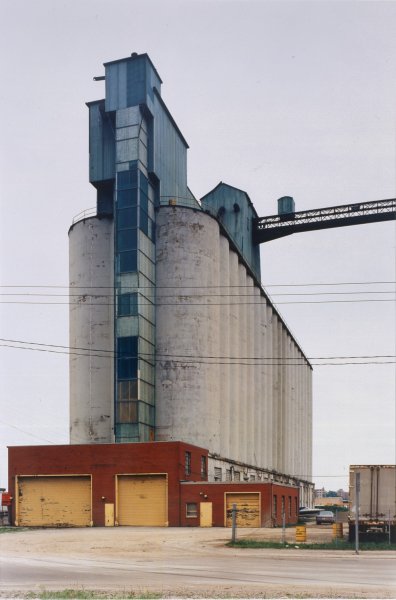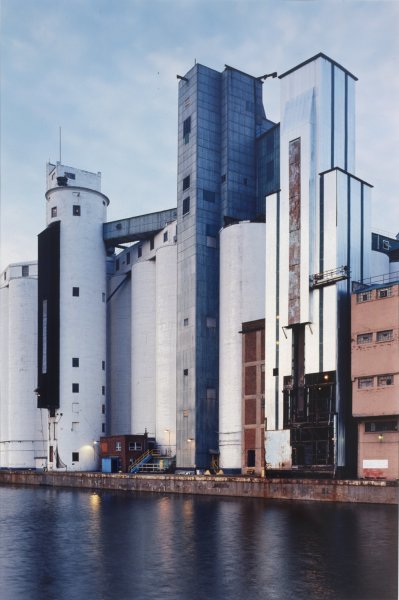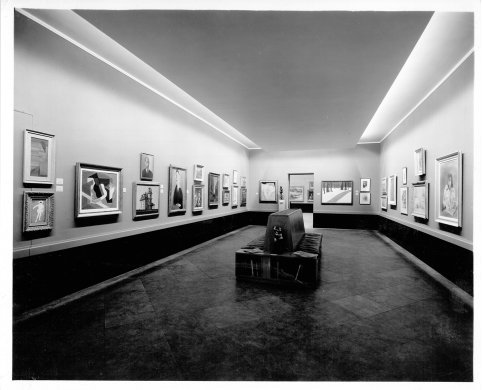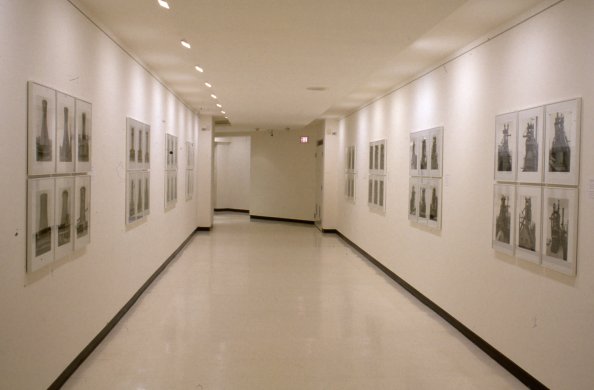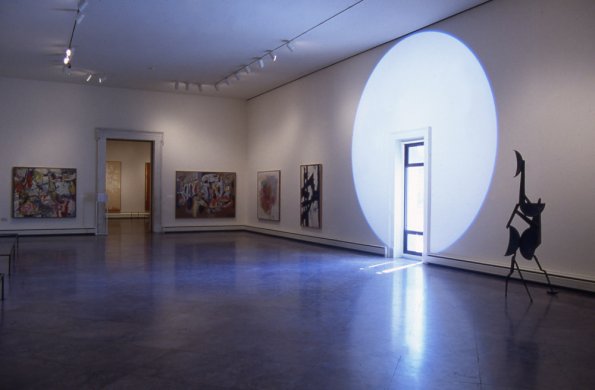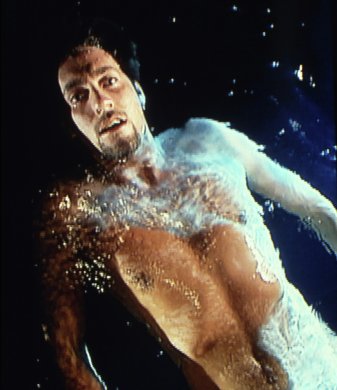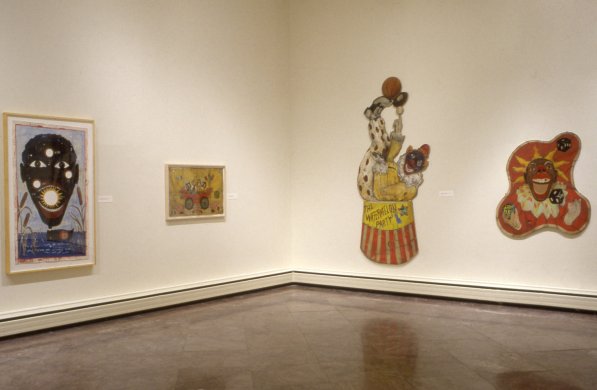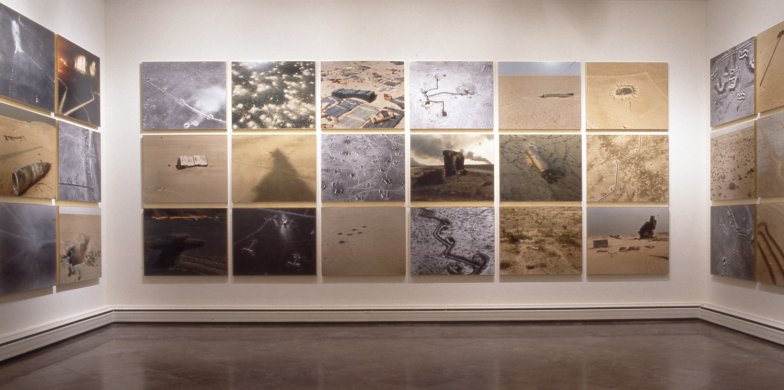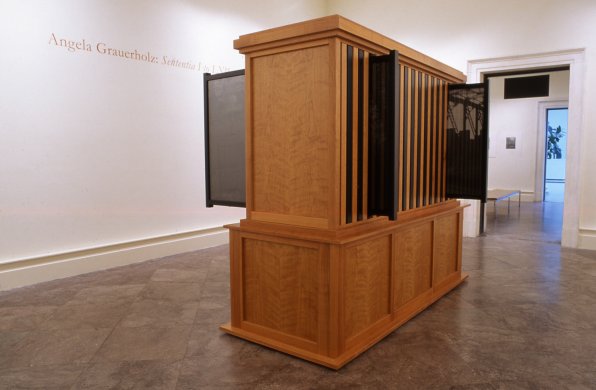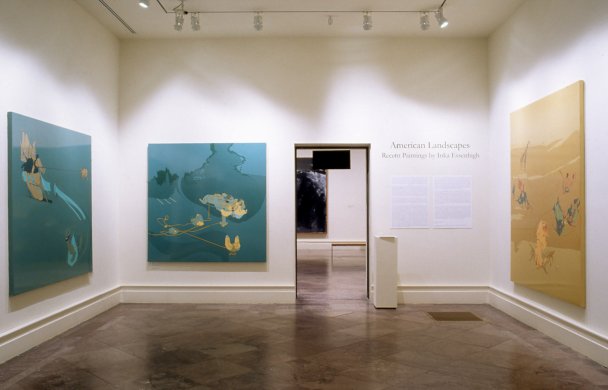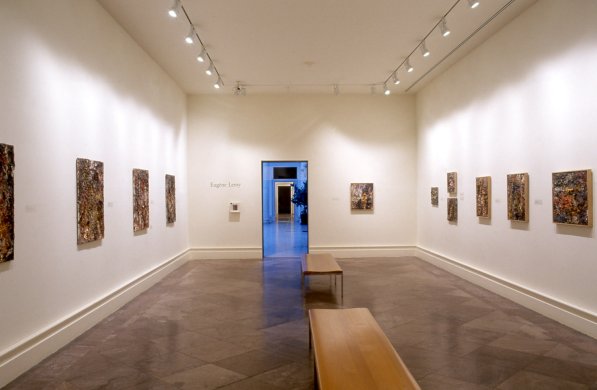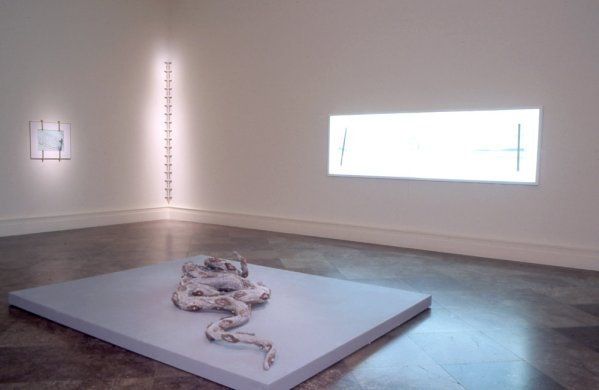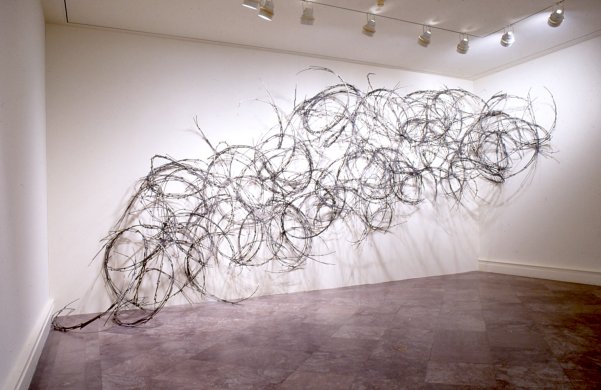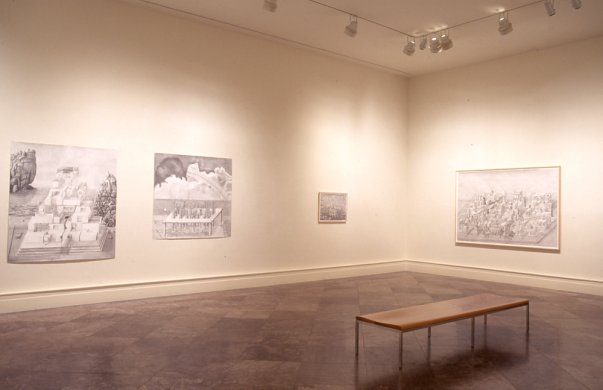Gerrit Engel: Buffalo Grain Elevators
Saturday, November 20, 1999–Sunday, January 2, 2000

Installation view of Gerrit Engel: Buffalo Grain Elevators. Photograph by Tom Loonan.
Clifton Hall Link
Gerrit Engel’s color photographs of Buffalo’s grain elevators reinterpret these icons of modern architecture. Since the early 1900s, America’s industrial buildings — devoid of references to European culture and history and symbolizing a new age and an emerging world economy — have served as inspiration for European architects. As a German traveling to Buffalo in the 1990s, Engel brings a contemporary eye to these quintessential structures, as only a European in love with modern American architecture can. This was Gerrit Engel’s first museum exhibition in the United States, and was accompanied by an illustrated brochure.
This exhibition was organized by Assistant Curator Claire Schneider, in conjunction with the New Room of Contemporary Art series.
About the New Room of Contemporary Art
The concept of the New Room of Contemporary Art echoes the mission and philosophy of its predecessor, the Room of Contemporary Art. Established in 1939, the Room was envisioned as a both a physical site devoted solely to the continuously rotating presentation of new art within the museum and a means to reinvigorate and reaffirm the museum’s dedication to collecting the art of its time.
It was managed by a special independent committee initially consisting of Buffalo attorney Philip J. Wickser (who helped to conceive the room and who drafted its charter), Seymour H. Knox, Jr., Albright Art Gallery Director Gordon B. Washburn, and artists Charles E. Burchfield and Anna Glenny Dunbar, both of whom called Buffalo home. Through the Room of Contemporary Art fund, the museum acquired Fernand Léger's La fume (Smoke), 1912; Joan Miró's Carnaval d'Arlequin (Carnival of Harlequin), 1924–25; and Henri Matisse's La Musique (Music), 1939, among many others.
